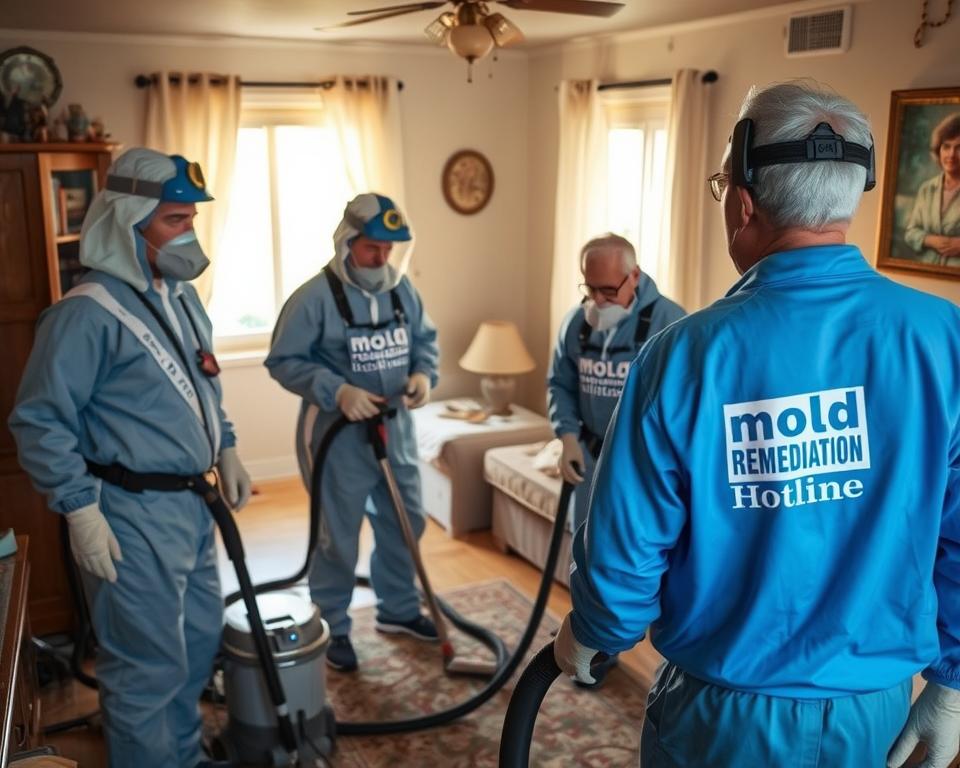Mold can be a serious health hazard, especially for older adults with weakened immune systems or respiratory issues. Did you know that mold exposure can exacerbate conditions like asthma and chronic obstructive pulmonary disease (COPD)?
Fortunately, there are programs available that provide affordable mold remediation options specifically designed for seniors living on fixed incomes. These programs can help protect the health and safety of older adults by providing access to professional mold removal services.
For immediate assistance, call 332-220-0303 for a consultation. Our comprehensive guide will explore various discount programs, financial assistance options, and specialized services available to older adults facing mold issues in their homes.
Key Takeaways
- Affordable mold remediation options for seniors on fixed incomes.
- Discount programs and financial assistance for mold removal services.
- Health implications of mold exposure for older adults.
- Government programs and community resources for mold removal.
- Practical advice on qualifying for assistance and verifying service providers.
The Serious Impact of Mold on Senior Health
Mold exposure poses significant health risks, particularly for older adults whose immune systems are more vulnerable. As people age, their lungs become less efficient at filtering out irritants, making them more susceptible to the harmful effects of mold.
Why Older Adults Face Higher Health Risks
Older adults face heightened risks due to age-related declines in their respiratory systems. The Centers for Disease Control and Prevention (CDC) reports that 21% of asthma cases worsen due to prolonged contact with airborne allergens. As a result, seniors are more likely to experience health problems when exposed to mold.
Common Respiratory and Allergic Reactions
Mold exposure can trigger a range of respiratory and allergic reactions in seniors. Common symptoms include:
- Persistent coughing and wheezing
- Throat irritation and nasal congestion
- Skin rashes and watery eyes
- Heightened sensitivity to other environmental allergens
These reactions can lead to more severe conditions, such as hypersensitivity pneumonitis, an inflammatory lung condition. Moreover, chronic sinus infections resistant to standard treatments often indicate ongoing mold exposure in the home environment.
| Symptoms | Health Impact |
|---|---|
| Persistent coughing, wheezing | Respiratory distress, asthma exacerbation |
| Skin rashes, watery eyes | Allergic reactions, discomfort |
| Chronic sinus infections | Ongoing health concerns, decreased quality of life |
The presence of mold in the air can lead to various concerns, including decreased quality of life and exacerbation of other health conditions common in older adults. Ensuring a mold-free living environment is crucial for maintaining the health and well-being of seniors.
Understanding the Cost of Professional Mold Remediation
The expense of mold remediation services varies widely across the United States, depending on several key factors. Thorough elimination of harmful mold growths is crucial not only for preserving respiratory health but also for maintaining building stability. Half-hearted DIY attempts often leave spores behind, creating recurring issues that can escalate costs in the long run.
Average Price Ranges Across the United States
The cost of mold remediation can range significantly depending on the region and the extent of the mold infestation. On average, homeowners can expect to pay between $500 to $6,000 for professional mold remediation services. The wide range in costs is due to various factors, including the type of mold, the size of the affected area, and the complexity of the remediation process.
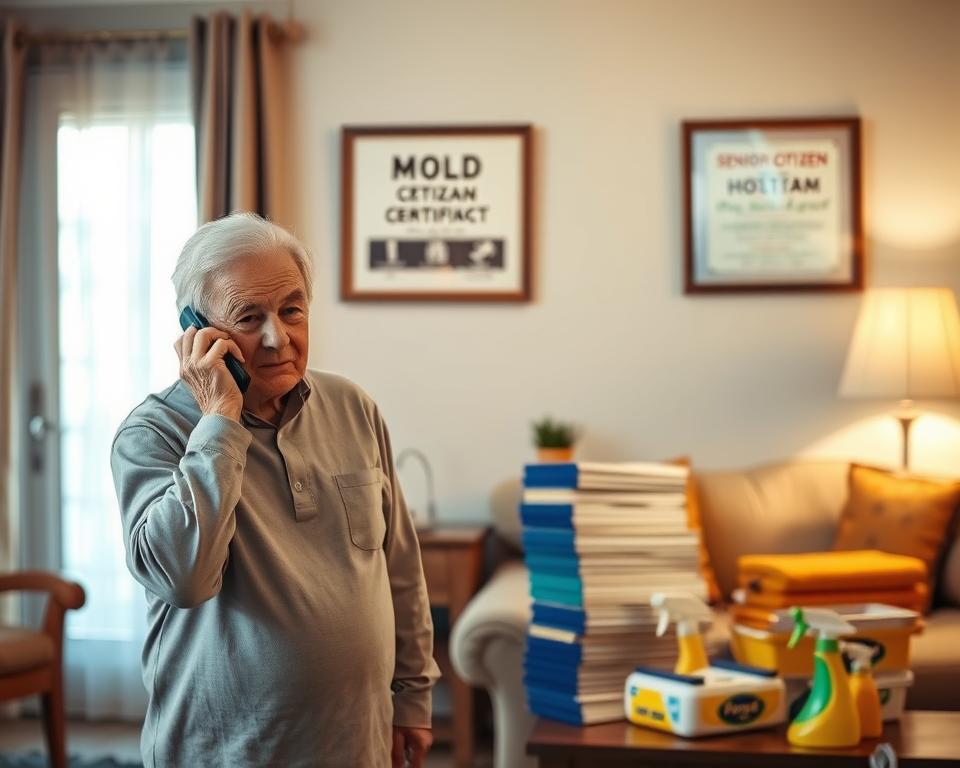
Factors That Influence Total Remediation Costs
Several factors contribute to the total cost of mold remediation. These include:
- The extent of mold infestation, with hidden growth requiring more extensive intervention.
- The type of mold present, as toxic black mold remediation costs more due to additional safety measures.
- Accessibility challenges, such as mold in crawl spaces or attics, which increase labor costs.
- Underlying moisture issues that must be addressed to prevent recurrence, potentially adding to the total expense.
- The need for specialized equipment like industrial air scrubbers and HEPA filtration systems.
- Restoration of affected materials after mold removal, which can sometimes exceed the cost of the actual mold treatment.
| Factor | Impact on Cost |
|---|---|
| Extent of Infestation | Hidden growth behind walls or under flooring increases costs. |
| Type of Mold | Toxic black mold requires additional safety measures, increasing costs. |
| Accessibility | Mold in crawl spaces or attics increases labor costs. |
Understanding these factors can help homeowners, especially seniors, budget for mold remediation services and ensure they receive comprehensive treatment to prevent future issues, thus maintaining good indoor air quality in their homes.
Senior Citizen Discounts for Mold Removal Services

Mold removal companies often provide special discounts for senior citizens, acknowledging their vulnerability to mold-related health risks. These discounts can significantly reduce the financial burden of mold remediation.
Types of Senior Discounts Offered by Remediation Companies
Remediation companies offer various discount programs tailored to seniors. These may include:
- Simple age verification through government-issued identification
- Membership cards from recognized senior organizations like AARP
- Income verification for premium discount programs
- Multi-tier discount systems based on age brackets
These programs help make mold removal services more affordable for seniors.
How to Verify and Qualify for Age-Based Discounts
To qualify for senior discounts, individuals typically need to meet certain requirements, such as being 60 years or older, having income below a certain threshold, and providing proof of ownership or residency.
The verification process usually involves providing identification and, in some cases, income verification. Seniors should inquire about discount programs before scheduling services to ensure they can apply the discounts.
Call 332-220-0303 for immediate consultation to learn more about available discounts and to schedule mold removal services.
Immediate Steps for Seniors Who Discover Mold
Upon finding mold, seniors should take immediate steps to ensure their safety and the integrity of their home. Mold can pose serious health risks, particularly for older adults with compromised immune systems or respiratory conditions.
Safety Precautions and Temporary Measures
When mold is discovered, seniors should first avoid the affected area to prevent exposure. If the mold is widespread, they should consider temporarily relocating until professional remediation can be arranged. It’s crucial to fix the source of moisture that’s causing the mold. Government agencies emphasize acting within 30 days of detection, as delays can significantly increase health risks and structural damage.
To maintain air quality, seniors can use fans to improve ventilation and reduce humidity levels. However, they should not attempt to remediate the mold themselves, especially if it’s extensive or in critical systems like HVAC.
When to Call for Professional Help: 332-220-0303
Seniors should contact professional help immediately at 332-220-0303 under several circumstances: when mold covers more than 10 square feet, appears black or dark green, or is located in HVAC systems. Professional assessment is also necessary when mold reappears after previous cleaning attempts or when seniors experience new or worsening respiratory symptoms.
Early professional consultation can significantly reduce overall remediation costs by addressing problems before they expand throughout the home’s structure. For immediate consultation, call 332-220-0303.
Government Assistance Programs for Home Remediation
Seniors facing home remediation challenges can find help through various government assistance programs. These initiatives are designed to support senior home safety and provide financial aid for necessary repairs, including mold remediation.
Federal Programs Supporting Senior Home Safety
Federal programs play a crucial role in assisting seniors with home remediation. For instance, Local USDA offices assist with application preparation, reducing paperwork stress for seniors. A notable example is a Missouri widow who used a government program to replace rotting floorboards, stating:
“The 1% loan made repairs possible without draining my savings.”
Some federal programs offer low-interest loans and grants to help seniors address environmental health hazards in their homes. These programs can be instrumental in covering the costs associated with mold remediation and other necessary repairs.
State and Local Government Initiatives
In addition to federal programs, state and local governments offer various initiatives to support senior home safety. State housing finance agencies frequently administer weatherization assistance programs that address moisture control and ventilation improvements to prevent mold growth.
- County and city health departments often provide free home assessments to identify mold problems and connect seniors with appropriate remediation resources.
- Area Agencies on Aging serve as valuable local resources for identifying state-specific programs targeting senior home safety and environmental health concerns.
- Community Development Block Grant (CDBG) funds distributed to local governments support home repair programs that can include mold remediation for qualifying senior homeowners.
| Program | Description | Benefit |
|---|---|---|
| Weatherization Assistance | Moisture control and ventilation improvements | Prevents mold growth |
| Home Repair Programs | Financial assistance for home repairs | Covers mold remediation costs |
| Healthy Homes Initiatives | Addressing environmental hazards | Improves home safety |

These government assistance programs can provide significant support to seniors facing home remediation challenges. By exploring these options, seniors can find the help they need to maintain a safe and healthy living environment.
The Section 504 Home Repair Program for Seniors
For older adults, maintaining a safe and healthy home environment is made more accessible with the Section 504 Home Repair Program. This program is designed to provide financial assistance to low-income seniors, enabling them to make necessary repairs to their homes, thus improving their living conditions and overall quality of life.
Eligibility Requirements and Income Thresholds
To qualify for the Section 504 Home Repair Program, applicants must meet specific eligibility criteria. These include being at least 62 years old, owning and occupying the property in need of repair, and having a very low income. The program is particularly beneficial as it offers loans with a fixed 1% interest rate, significantly below market averages, and up to $50,000 can be borrowed for critical home upgrades.
Income thresholds are a crucial factor in determining eligibility. Applicants’ income must be below the very low-income limit for their area, as defined by the USDA. This ensures that the program targets those who need it most.
Application Process and Documentation Needs
The application process begins with contacting the local USDA Rural Development office or visiting the USDA website to obtain the necessary forms and guidance. It’s essential to gather all required documentation, including proof of ownership, income verification (such as Social Security statements), identification, and citizenship verification.
Applicants must also provide detailed information about the needed repairs, often requiring professional estimates from licensed contractors. The application review process typically takes 30-60 days, with priority given to emergency situations. Successful applicants receive guidance on how funds will be disbursed, typically directly to contractors after work completion and inspection.
As stated by the USDA, “The Section 504 Home Repair Program is a vital resource for low-income seniors, helping them to repair and maintain their homes.” This quote underscores the program’s importance in supporting seniors’ home safety and integrity.
Grants and Loans Specifically for Senior Home Repairs
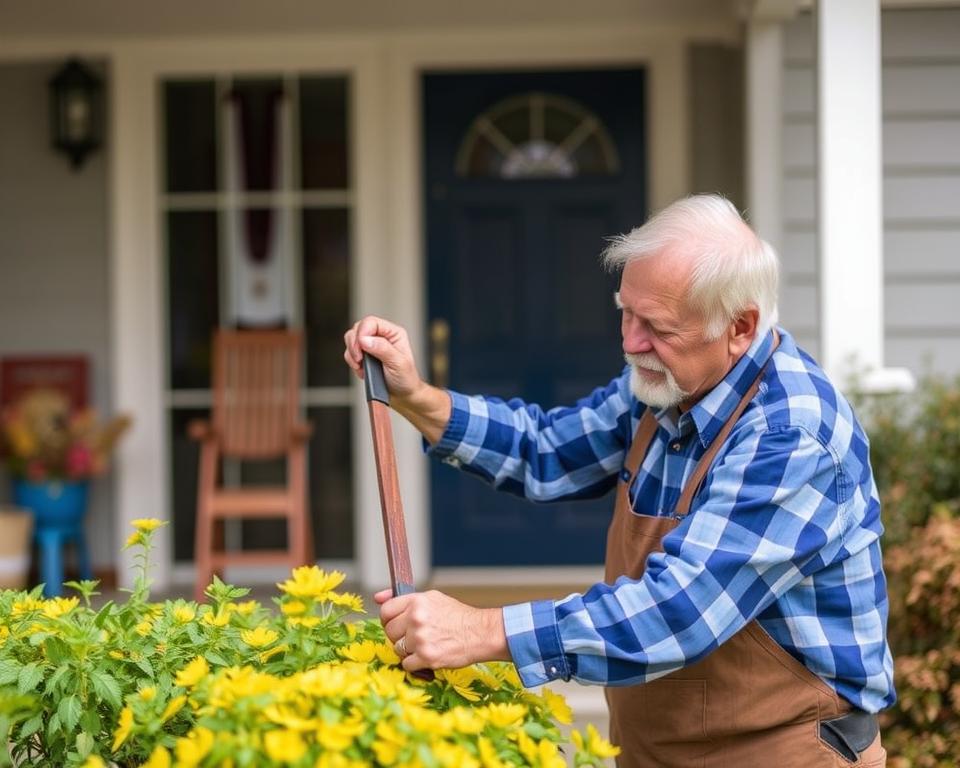
Financial assistance for senior home repairs is available through various programs designed to support low-income seniors and property owners. These initiatives provide crucial funding for necessary home repairs, including mold remediation, to ensure safe living conditions.
Non-Repayable Grant Options for Low-Income Seniors
Low-income seniors can benefit from non-repayable grants that do not require repayment. These grants are particularly beneficial for seniors on fixed incomes who cannot afford loan repayments.
- Some state and local government programs offer grants to low-income seniors for home repairs.
- Nonprofit organizations also provide grants for senior home repairs, focusing on health and safety improvements.
Low-Interest Loan Programs with Flexible Terms
For seniors who can manage repayments, low-interest loan programs offer a viable alternative. These loans typically have more favorable terms than conventional loans, including lower interest rates and longer repayment periods.
- The USDA Section 504 Home Repair Loan program offers loans up to $40,000 at a fixed 1% interest rate with terms up to 20 years.
- HUD’s Title I Property Improvement Loan Program insures loans made by private lenders for home improvements, including mold remediation.
- Many state housing finance agencies offer deferred payment loans that don’t require monthly payments until the home is sold or transferred.
- Credit unions and community development financial institutions provide specialized loan products for senior home repairs, considering Social Security income.
These financial assistance programs are crucial for seniors who need to make home repairs but lack the necessary funds. By providing both grants and low-interest loans, seniors have multiple options to address their home repair needs, including mold removal and other essential maintenance.
Understanding Eligibility Criteria for Financial Assistance
To access financial assistance for mold removal, seniors must navigate specific eligibility criteria that vary by program. Verifying ownership and repair urgency forms the backbone of successful applications.
Income Requirements and Documentation Process
Most assistance programs have income requirements that applicants must meet to qualify for financial aid. The documentation process typically involves providing proof of income through tax returns, social security statements, or other financial documents.
- Applicants must provide detailed financial information to determine their eligibility.
- Income thresholds vary by program, with some having more stringent requirements than others.
Property Ownership and Residency Verification
Property ownership and residency verification are critical components of the eligibility criteria. Proof of ownership is typically required through property deeds, mortgage statements, or title insurance documentation.
- Residency verification often involves providing utility bills, driver’s license addresses, and voter registration that consistently show the property as the applicant’s primary residence.
- Mobile home owners may need to provide additional documentation, such as title to the structure and proof of land ownership or lease agreement.

By understanding these eligibility criteria, seniors can better navigate the application process for financial assistance with mold removal.
Step-by-Step Application Guide for Mold Removal Assistance
The path to securing mold removal assistance involves several key steps that seniors should be aware of to ensure a smooth application process. Understanding these steps can help navigate the complexities of the various programs available.
Required Documentation Checklist
To efficiently submit a request for mold removal assistance, seniors must gather and submit the necessary documentation. This includes:
- Completed application form using official guidelines
- Notarized copies of required documents, such as proof of age, income verification, and property ownership
- Supporting documentation detailing the mold issue and required remediation
Ensuring that all documents are accurately prepared and submitted is crucial for a successful application.
Timeline Expectations and Approval Process
The timeline for the application process can vary depending on several factors, including the complexity of the case and the specific programs or agencies involved. Here are some general guidelines:
- Initial review typically takes 2-4 weeks, with acknowledgment of receipt within 5-7 business days
- Property inspections are generally scheduled within 30 days of application acceptance
- Approval decisions for emergency situations may be expedited to 2-3 weeks, while standard applications take 45-60 days
- Fund disbursement varies by program, with some providing immediate access to funds
Regular communication with program administrators can help identify and address potential delays or documentation issues promptly, ensuring a smoother process.
Interest Rates and Loan Terms for Senior Homeowners
Senior homeowners seeking financial assistance for mold removal can benefit from understanding the various loan options available. When exploring these options, it’s essential to consider both the interest rates and the repayment terms to ensure they align with their financial situation.
Comparing Fixed vs. Variable Rate Options
Loan options for seniors typically come with either fixed or variable interest rates. Fixed rates provide predictability, as they remain constant throughout the loan term, whereas variable rates can fluctuate based on market conditions. For senior homeowners living on a fixed income, the stability offered by fixed-rate loans can be particularly beneficial.
It’s also worth noting that the type of interest rate can significantly impact the total cost of the loan. For instance, variable rates might start lower but can increase over time, potentially leading to higher overall costs.
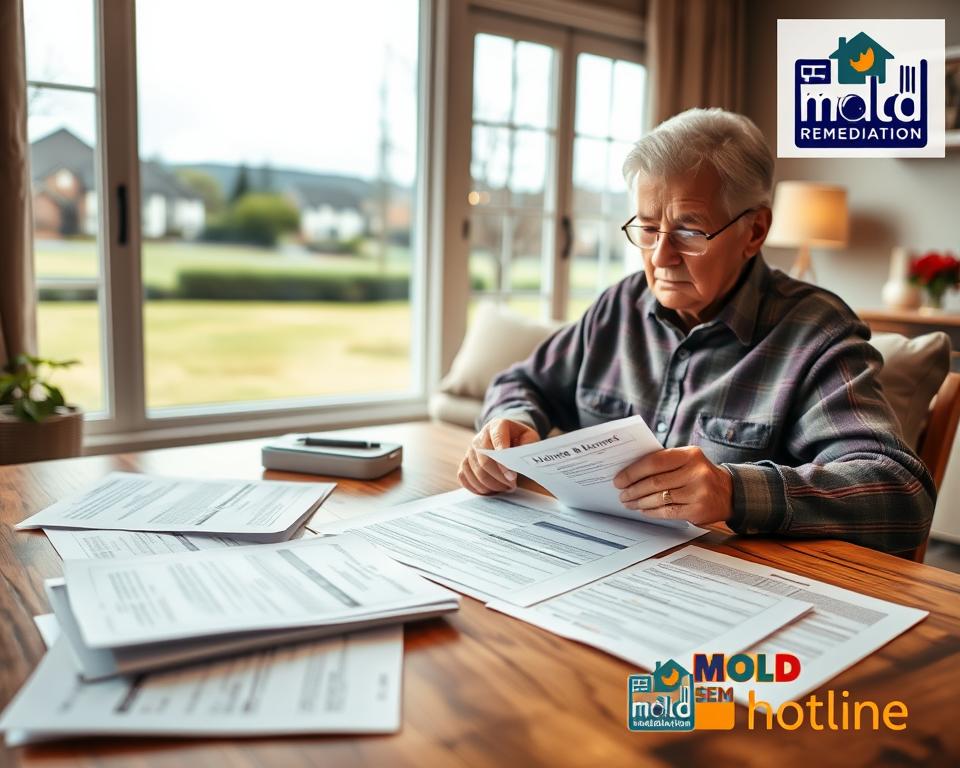
Repayment Terms Designed for Fixed Incomes
Repayment terms for senior home repair loans are often designed to accommodate the constraints of a fixed income. Several options are available, including:
- Extended repayment terms of 15-20 years, which create manageable monthly payments.
- Deferred payment loans that don’t require monthly payments until the home is sold or transferred.
- Graduated payment schedules that start with lower initial payments, increasing over time.
- Seasonal payment options that allow higher payments during months with lower utility costs.
These flexible repayment options can provide significant relief for seniors, helping them maintain their living conditions without undue financial strain. By understanding and leveraging these options, seniors can access necessary assistance for home repairs, ensuring their home remains safe and secure.
As part of a broader program to support senior homeowners, these loan options and repayment terms are designed to be accessible and manageable, helping seniors age in place with dignity.
Alternative Financing: RenoFi Loans and Home Equity Options

Alternative financing options are becoming increasingly important for seniors who need mold remediation. Traditional loans often restrict borrowing to 80-85% of a home’s current worth, which may not be sufficient for comprehensive remediation projects.
Benefits of Future Value-Based Financing
RenoFi’s model calculates potential value after improvements, increasing available funds by up to 75%. This future value-based financing can be particularly beneficial for seniors who plan to stay in their homes long-term. By considering the potential increased value of their home after remediation, seniors can access more funds for necessary repairs.
When to Consider Home Equity for Mold Remediation
Home equity financing becomes particularly advantageous when mold remediation costs exceed $10,000 and government assistance programs are unavailable or insufficient. Seniors with substantial equity (typically 40%+ of home value) may benefit from Home Equity Lines of Credit (HELOCs) offering flexible draw periods and interest-only payment options during initial years.
Some key benefits of home equity financing for mold remediation include:
- Fixed-rate home equity loans provide stability for seniors who need predictable payments and prefer one-time disbursement for comprehensive remediation projects.
- Reverse mortgage options allow seniors 62+ to access equity without monthly repayments, though these should be carefully evaluated due to their impact on estate planning.
- The tax-deductible nature of interest on home equity loans used for substantial home improvements (including mold remediation) may provide additional financial benefits for seniors who itemize deductions.
- Home equity options typically offer faster approval and funding than government assistance programs, making them appropriate for situations requiring immediate remediation.
- Seniors planning to sell their homes within 3-5 years may find home equity financing advantageous as remediation costs can often be recouped through increased property value at sale.
- Local credit unions often offer more favorable home equity terms for seniors than national banks, including reduced closing costs and more flexible qualification criteria.
When considering home equity financing, seniors should carefully evaluate their living conditions, the type of mold remediation needed, and the overall impact on their home’s value and their living area.
Community and Nonprofit Support for Mold Cleanup
Nonprofit groups are providing critical assistance to seniors dealing with mold in their living conditions. These organizations work alongside government programs to offer comprehensive support for mold remediation.
A recent example from Michigan demonstrates the effectiveness of this combined approach. A homeowner was able to combine USDA grants with volunteer labor to replace moisture-damaged walls, cutting costs by 40% while ensuring professional-grade results. This collaborative effort highlights the value of community support in addressing mold issues.
Local Organizations Offering Free or Reduced-Cost Services
Several local organizations offer free or reduced-cost services to seniors in need of mold remediation. These include:
- Catholic Charities’ Senior Home Repair programs, which operate in numerous dioceses nationwide.
- Lutheran Social Services, offering home safety modification programs in many regions.
- Jewish Family Services agencies, providing home safety assessment and improvement services with sliding scale fees based on income.
Faith-Based and Volunteer Programs for Seniors
Faith-based and volunteer programs play a crucial role in supporting seniors in the area of mold cleanup. Organizations such as the United Methodist Committee on Relief (UMCOR) provide disaster recovery assistance that includes mold remediation following flooding events. Additionally, interfaith volunteer coalitions organize seasonal “repair blitzes” targeting senior homes with critical maintenance needs, including moisture and mold issues.
As one expert notes, “Community support is essential in helping seniors address mold issues in their homes.” These efforts work together with government assistance to provide comprehensive support for seniors dealing with mold remediation.
Selecting a Reputable Mold Remediation Company
Selecting the right mold remediation company is crucial for seniors, given the health risks associated with mold exposure. Seniors need to ensure that the company they hire is not only effective but also prioritizes their safety and well-being.

Certification and Insurance Requirements
A reputable mold remediation company should have the necessary certifications and insurance. Look for companies certified by organizations such as the Institute of Inspection, Cleaning and Restoration Certification (IICRC). Ensure they have liability insurance and workers’ compensation insurance to protect you and their workers in case of accidents. This is crucial for safety and financial protection.
Questions to Ask Before Hiring a Contractor
Before hiring a mold remediation company, it’s essential to ask the right questions. Consider inquiring about their experience with mold remediation in homes occupied by seniors or individuals with respiratory vulnerabilities. Ask about their mold removal processes, including containment protocols to prevent cross-contamination, and their methods for identifying and addressing the moisture source that led to mold growth.
- Request detailed information about their experience with seniors or individuals with respiratory issues.
- Ask for a clear explanation of their containment protocols.
- Inquire about their moisture source identification process.
- Request information about the antimicrobial products they use and whether they are EPA-registered.
- Discuss their post-remediation verification procedures, including air quality testing.
- Ask about accommodation options for seniors during remediation.
- Inquire about payment terms, including senior discounts or acceptance of insurance benefits.
- Request references from senior clients and follow up on their experiences.
- Understand their written guarantee or warranty policy.
By carefully evaluating potential mold remediation companies based on these criteria, seniors can ensure they receive high-quality services that mitigate hazards and restore a safe and healthy living environment. For immediate consultation and to find a reputable mold remediation company, call 332-220-0303.
Preventive Measures to Avoid Future Mold Issues
Effective mold prevention strategies can greatly enhance the safety and quality of home care for seniors. By understanding the importance of air quality and living conditions, seniors can take proactive steps to mitigate mold growth and related hazards.
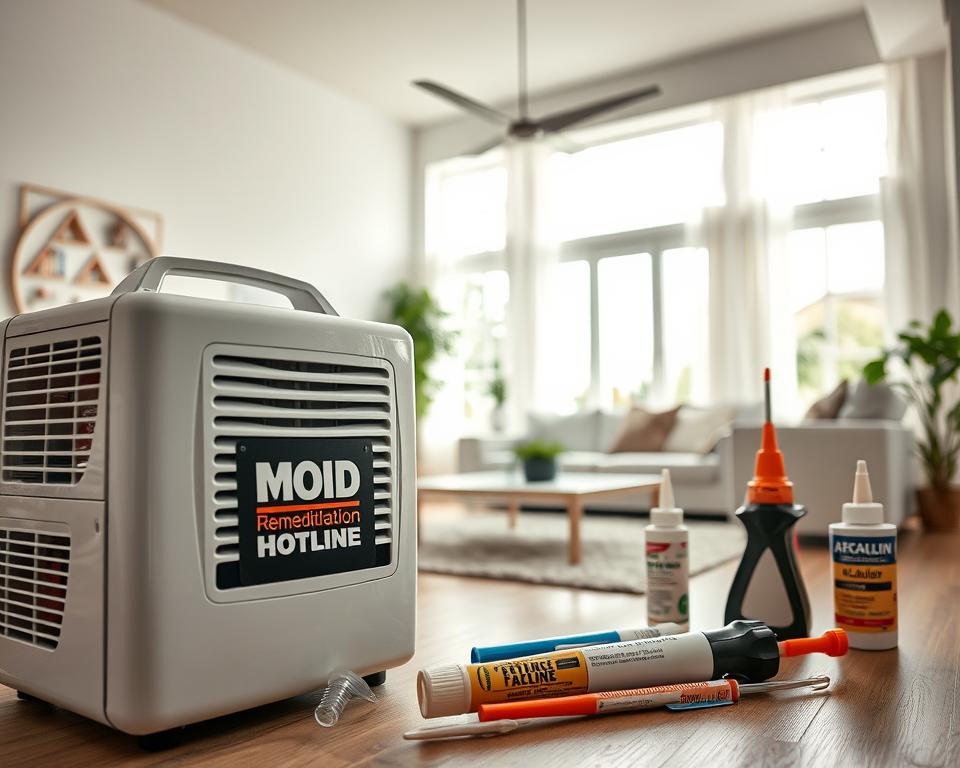
Home Maintenance Tips for Aging Properties
Proper maintenance is key to preventing mold in aging properties. This includes ensuring that bathrooms and kitchens are well-ventilated. Installing exhaust fans and running them for 20 minutes after showers or cooking can significantly reduce humidity levels.
- Install battery-operated humidity monitors in bathrooms, kitchens, and basements to track moisture levels.
- Use bathroom fans with humidity sensors that automatically run until moisture levels normalize.
- Apply mildew-resistant paint in bathrooms and other moisture-prone areas.
Affordable Moisture Control Solutions for Seniors
Controlling moisture is crucial for preventing mold growth. Seniors can benefit from affordable solutions such as:
- Using furniture risers in basements or ground-floor rooms to improve air circulation.
- Applying water repellent sealants to exterior masonry and foundations.
- Installing programmable dehumidifiers that maintain optimal humidity levels automatically.
By implementing these measures, seniors can significantly improve their living conditions and reduce the risk of mold-related issues, ensuring a healthier and safer living environment.
As “prevention is better than cure”, taking proactive steps towards mold prevention can save seniors from the hassle and expense of mold remediation in the future.
“The key to a healthy home is maintaining good air quality and controlling moisture levels.”
Real-Life Success Stories: Seniors Who Secured Assistance
Real-life examples demonstrate how seniors have leveraged community resources and government aid to tackle mold issues effectively. These stories highlight the positive impact of comprehensive support systems on the lives of elderly homeowners.
Government Program Recipients
Several seniors have benefited from government programs designed to assist with mold remediation. For instance, a Michigan homeowner combined USDA grants with volunteer labor to replace moisture-damaged walls, cutting costs by 40% while ensuring professional-grade results. Such initiatives not only alleviate financial burdens but also ensure that homes are restored to safe and healthy conditions.
Gladys, an 83-year-old living alone in a 1940s home in Ohio, connected with a local Rebuilding Together chapter through her church when black mold appeared following basement flooding. Volunteers with professional construction backgrounds provided labor, while the organization secured donated materials, completing a $12,000 remediation project at minimal cost to Gladys. The team also installed improved drainage systems and taught Gladys simple maintenance techniques to prevent future issues.
Community Support Beneficiaries
Community-based initiatives have also played a crucial role in assisting seniors with mold remediation. Carlos, a 75-year-old in Arizona, benefited from a university extension program’s environmental health initiative that provided free mold testing and connected him with local contractors who offered discounted remediation services. The community-based approach included follow-up education and regular volunteer check-ins to ensure the effectiveness of the remediation and prevent recurrence.
Mabel, a 90-year-old in Tennessee, received assistance through an interfaith volunteer network that mobilized skilled volunteers from multiple congregations to address attic mold caused by roof leaks. Beyond remediation, the volunteers replaced damaged insulation, repaired roof issues, and established a rotating schedule of seasonal maintenance visits to help Mabel maintain her home’s condition.
These success stories underscore the importance of community support and government assistance in helping seniors address mold hazards and maintain safe living environments. By leveraging these resources, elderly homeowners can protect their health and the integrity of their homes.
“The collaborative approach between government programs and community volunteers demonstrates how comprehensive support systems can address even severe environmental health challenges for vulnerable seniors.”
Conclusion: Taking Action to Protect Your Health and Home
As seniors take control of their living environments, mold remediation emerges as a crucial step toward healthier aging. This comprehensive guide has explored various aspects of addressing mold issues, from understanding the risks to navigating financial assistance programs.
Mold remediation represents a critical investment in both property value and personal health, particularly for seniors with respiratory vulnerabilities or compromised immune systems. Taking prompt action at the first sign of mold can significantly reduce both remediation costs and potential health impacts.
The variety of financial assistance options available means that limited income should never prevent seniors from addressing dangerous mold conditions in their homes. By combining multiple resources—from government programs to community support networks—seniors can find comprehensive solutions to complex mold situations.
Documentation plays a crucial role in securing appropriate assistance. Seniors should maintain systematic records of both health impacts and home conditions from the first sign of problems. For immediate guidance on addressing mold concerns, call our consultation line at 332-220-0303 to discuss senior-specific discount programs and assistance options.
By taking action today, seniors not only resolve current mold issues but also create a healthier living environment that supports independent aging and improved quality of life for years to come. This proactive approach ensures a safer home and better health, aligning with the ultimate guide to mold remediation for seniors.
For a safety-focused and mold-free living environment, seniors are encouraged to reach out to professionals who can provide expert assistance. By doing so, they can ensure their homes remain safe havens that support their well-being.
